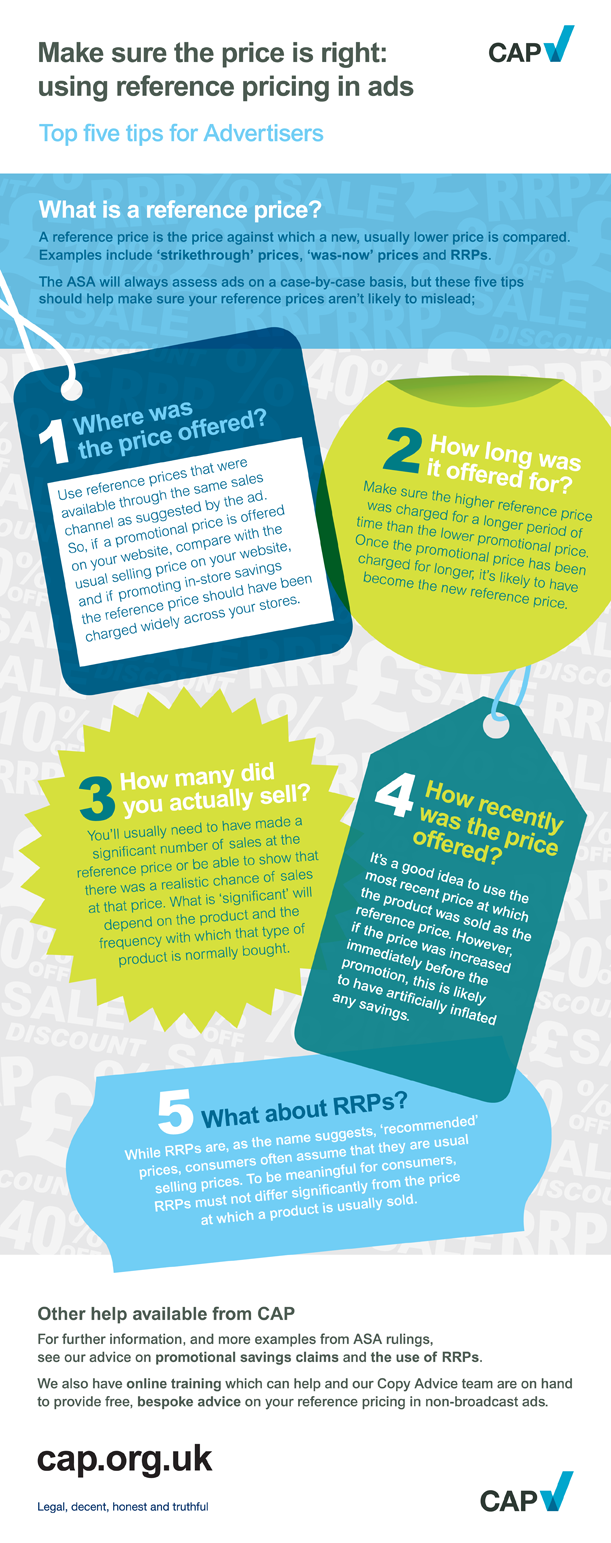The ASA/CAP have released a post called: Make sure the price is right: using reference pricing in ads. I have enclosed the text of the link below, but please have a look at the ASA/CAP site as there are lots of things of interest to anyone with an interest in Ethical Marketing.
The ASA’s research into consumer understanding of reference pricing (e.g. ‘strikethrough’ prices, ‘was-now’ prices and RRP’s) showed that consumers have limited understanding of pricing practices in general, and reference pricing in particular, and have an expectation that reference prices are regulated and can therefore be trusted.
It’s obviously essential that consumers can have confidence in reference pricing and that such prices are based on their reasonable assumptions about them. To help prevent misleading advertising and protect consumers and responsible businesses alike, here’s a reminder of five key things to consider when stating a reference price or RRP in your advertising:
1. Where was the price offered?
When assessing the likelihood of consumers being misled, the ASA will consider where the ad appears and where the product was sold at the higher reference price. If an advertised reference price is not the usual selling price through the same sales channel suggested by the ad (i.e. online, in store, etc.), or was only charged at a limited number of stores, it is likely to mislead consumers – particularly if no further context is given to explain the nature of the reference price.
2. How long was it offered for?
The length of time a product was sold at the higher reference price will also affect the likelihood of an ad misleading consumers. Generally, the higher reference price should have been charged for a longer period of time than the promotional price. When a promotional price has been charged for longer than the higher reference price, it’s likely to be considered misleading.
3. How many did you actually sell?
The number of sales made at the higher price will be taken into account when considering whether reference price claims are problematic. If you can’t demonstrate significant sales at the higher reference price, or that this was a realistic selling price, the ad is likely to be problematic. What is ‘significant’ will depend on the product and the frequency with which that type of product is usually purchased.
4. How recently was the price offered?
A reference price is likely to be misleading if it’s not the most recent established price at which the product was sold, particularly if no further context is given. However, if the pricing history indicates that the price was increased for a short period of time immediately before a promotional price reduction, the ASA is likely to view this as misleadingly exaggerating the saving.
5. Is the RRP the price at which it’s generally sold?
The Advertising Codes contain a specific rule about the use of RRPs (rule 3.40) requiring that quoted RRP’s do not differ significantly from the price at which a product is generally sold. You need to take care when using RRPs to ensure that they accurately reflect the price consumers will generally pay for the product across the market. See our advice on the use of RRP’s for more detailed guidance.
For further information, and more examples from ASA rulings, see our advice on promotional savings claims. Our Copy Advice team are also on hand to provide free, bespoke advice on your reference pricing in non-broadcast ads.


